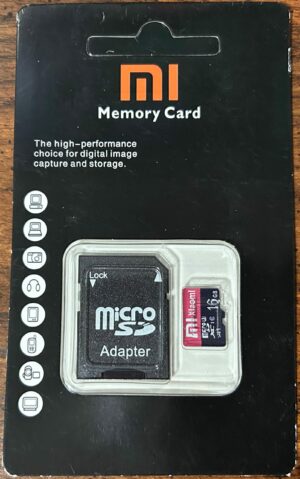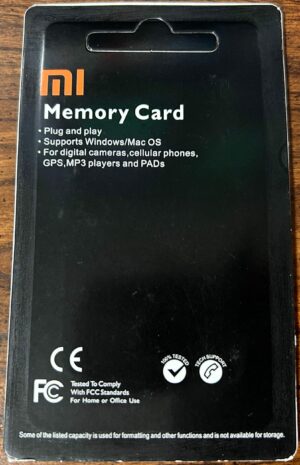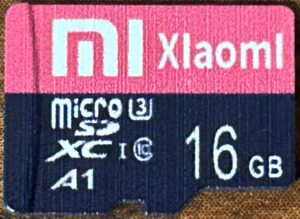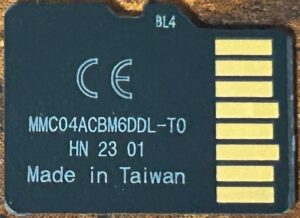- Obtained from: AliExpress
- Price paid: $5.38
- Advertised capacity: 16GB
- Logical capacity: 16,106,127,360 bytes
- Physical capacity: 4,026,329,600 bytes
- Fake/skimpy flash: Fake flash
- Protected area: 0 bytes
- Speed class markings: Class 10, U3, A1
- CID data:
- Manufacturer ID:
0x00 - OEM ID:
0x0000 - Product name:
0x0000000000 - Product revision:
0x00 - Serial number:
0x000048bd - Manufacture date: Jan 2023
- Manufacturer ID:
- Sequential read speed (MB/sec): 18.96
- Sequential write speed (MB/sec): 7.29
- Random read speed (IOPS/sec): 1028.13
- Random write speed (IOPS/sec): 1.48
- Read/write cycles to first error: 0
- Read/write cycles to complete failure: 6,618
- Total days to complete failure: 90
- Card reader used: JJS CR-UTC4AC
- Package front:

- Package back:

- Card front:

- Card back:

Discussion
This is another card that I purchased for a couple of reasons: first, because I wanted to see if it was possible to find both fake flash and non-fake flash in the same brand, but also because I wanted to evaluate a few knockoff cards. (For those of you outside of China: Xiaomi is a pretty well known electronics maker in China — many have dubbed it “the Apple of China” — but from what I can tell, they don’t sell microSD cards…or any storage products whatsoever. This seems to be a pretty common M.O. for knockoff media sellers — they will label something using the name of a pretty well known electronics manufacturer, even though the manufacturer they’re knocking off isn’t known for making flash media.)
I purchased two samples: a 16GB and a 2TB. What surprised me is that both samples were fake flash — I expected the 2TB card to be fake, but I didn’t expect the 16GB card to be fake.
Performance metrics were — as to be expected — pretty abysmal. All performance metrics were below average; and with the exception of the random read metric, all performance metrics were more than one standard deviation below average. Scores were not good enough to qualify for any of the performance marks that it bore. Perhaps it would have done better had it been tested under proper conditions, but I highly doubt it.
On the endurance front, this card started having issues almost immediately. During the first round of testing, a 1.8MB “hole” appeared, where reads from sectors in the hole resulted in all zeroes being read back. This hole persisted in size and location during subsequent rounds. Several more such holes (of varying sizes) appeared during subsequent rounds, but did not persist for more than a few rounds. Additionally, data verification failures happened during a few rounds of testing, affecting ranges in size from a few hundred kilobytes to several megabytes. Curiously, however, these issues stopped between rounds 1,599 and 5,239 (with the exception of the original hole discovered during the first round); at this point, the card began to suffer a lot of bit flip errors. It finally failed during round 6,619 — when any attempt to write to the card resulted in an I/O error.
Given that the hole that appeared during the first round of testing — which I’ll call the “origi-hole” — persisted during all rounds of testing, and combined with the fact that all subsequent errors happened after the location of the origi-hole, it could be that the origi-hole marks the end of the intended physical space, and that the remaining space is being used for wear leveling. I haven’t seen any other cards exhibit this kind of behavior. If that’s the case, then the true size of the device would be 3,824,201,728 bytes instead. But…that’s just my guess.
March 15, 2024

